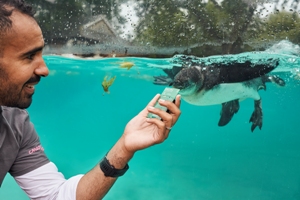Low Power Wide Area Networks: Creating a powerful ecosystem for success

The Internet of Things (IoT) is poised to transform the way in which many businesses, cities, processes and even people operate. It will disrupt a whole range of industries, says Peter Karney, head of product innovation at Digital Catapult, from healthcare to conservation or street lighting to livestock welfare.
Whether it is being used for remote tracking of high-value assets from jewellery to medical supplies, keeping watch on wildlife vulnerable to poaching, monitoring health issues, or remote emergency response measures, IoT can be employed to great effect in almost every sector.
This is why the estimates of the global value for the Internet of Things (IoT) are so high, with McKinsey & Company placing the total economic benefit in 2025 at anything between $3.9 trillion (€3.27 trillion) and $11.1 (€9.31 trillion) trillion. That would be equivalent to 11% of the world’s entire GDP in that year.
For the UK, it is estimated that the IoT will be worth £81 billion (€90.48 billion) by 2020, and that in the years leading up to this it will create 67,000 jobs. Alongside Big Data, the efficiency savings created by IoT technology will generate a combined £292 billion (€326.16 billion). We are already seeing the results of some of these changes in neighbouring cities: Barcelona, for example, saves $37 million (€31.02 million) a year through smart lighting. It’s just one example of the huge differences the IoT can facilitate.
Looking at these figures, there is clear impetus for the UK to press ahead with its plans to become a centre for IoT development and look to capitalise on the opportunities it offers. One key area of investment will be Low Power Wide Area Networks (LPWAN), which according to McKinsey’s report will likely account for around 25% of the UK’s IoT value in 2025.
LPWAN uses less energy than other conventional forms of connectivity such as 3G or Wi-Fi and as such is very battery efficient. It can also transmit data over very long distances, in some cases more than 50 miles. It achieves this by sending small amounts of data at a time using a combination of advanced radio technologies. This makes it ideal for use in scenarios where data needs to be sent from a remote location over a long period of time, without needing to recharge or change the batteries powering the technology.
When used with solar panels or other energy harvesting techniques the sensor could run indefinitely. It’s a versatile and low-cost technology that presents opportunities for all organisations – from enterprises interested in asset tracking and inventory control to councils looking to monitor social infrastructure. It can even be placed within a concrete structure, under a road, or in a sewer and used to send data for decades without needing to replace the batteries.
Digital Catapult recently started working with the Zoological Society of London (ZSL) on one way in which we might use LPWAN in the future. ZSL engaged UK-based companies to help them develop technology that can be used to establish a rich sensor network using both LPWAN and satellite.
In future, this has the potential to help conservationists monitor wildlife and respond to poaching threats on land and at sea in some of the world’s most remote national parks. To build on this initiative ZSL recently hosted hackathon at London Zoo in collaboration with the U.S. Embassy London and Bloomberg. The Digital Catapult’s Things Connected team were in attendance and provided guidance and advice to the teams.
Access to testing facilities for the technology is vital if we are to fully realise the potential of LPWAN and the IoT. As part of our work with ZSL, they installed an LPWAN base station at ZSL London Zoo, where prototypes can be easily tested and validated on-site. This is a valuable approach that offers organisations the access they need to test and run IoT prototypes using LPWAN. At this moment there are no nationwide networks for testing LPWAN devices in the UK, even with the telecoms industry’s high adoption rates.
At Digital Catapult, we are working to address this issue by increasing access to LPWAN for UK businesses. We recently announced the expansion of our Things Connected LPWAN innovation programme from its existing areas of Greater London, Milton Keynes, Cambridge to five new regions in the UK. This will see us manage the investment of more than half a million pounds into regional networks that bid for funding through an Open Call process.
The partners that we select will be able to implement and operate a free-to-use regional LPWAN network for testing and experimenting with new products, and alongside funding will also receive expertise and technical training from Digital Catapult.
We’re also working with councils and large businesses to find commercial applications for IoT and LPWAN to help develop the technology. Our work with BOC (the provider of industrial, medical and speciality gases in the UK and Ireland), for example, is exploring how the company can develop a robust, cost-effective LPWAN tracking system that will seamlessly integrate into their gas production and distribution facilities.
These are just some of the steps being taken to galvanise an ecosystem around LPWAN. Research in 2015 found that IoT adoption rates in the UK were at 30%, and predicted adoption rates of 43% by 2020 with growth across all sectors.
If it is to become a world leader and profit from the technology, the UK needs to support these industries as they look to invest in IoT and grow their capabilities in this revolutionary field. We need a concerted, collaborative effort across government and businesses to share insights and best practice across all regions of the UK. Only then will we be able to lead the way and fully unlock the potential applications of the IoT and LPWAN.
The author of this blog is Peter Karney, head of product innovation at Digital Catapult
Comment on this article below or via Twitter @IoTGN

